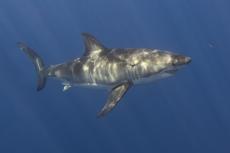Shipwreck Linked to Wordsworth Family Granted Protection
Press Release
The wreck of the Earl of Abergavenny, an East India Company ship, captained by John Wordsworth, brother of renowned Romantic poet William Wordsworth, has been granted protection. It has been scheduled by the Department for Culture, Media and Sport (DCMS) on the advice of Historic England.
The Earl of Abergavenny was launched in 1796 in Northfleet, Kent and is rare as one of only 36 ships of 1460 tons that formed a special class of the Company’s merchant fleet. It was an early example of the changing technologies in ship building of the time, incorporating the use of iron in its construction.
Together with other East India Company vessels, the Earl of Abergavenny – a cargo ship which also carried company employees and fare paying passengers to Bengal and their bases in southern India - contributed to the growth of western economies during the 17th-19th centuries by changing the focus of Britain’s trading operations from Indian textiles to China tea.
Protecting the shipwreck through scheduling means that divers can dive the wreck but must leave its contents in situ.
Captain John Wordsworth – brother of Romantic Poet William Wordsworth
The Wordsworth family had a close association with the East India Company and John Wordsworth embarked on a life at sea to help support William Wordsworth’s writing career.
He captained two successful voyages on the Earl of Abergavenny to China but lost his life with 250 crewmen and passengers on his fifth trading voyage from Portsmouth to Bengal and China.
Due to a combination of human error and stormy weather, the Earl of Abergavenny sank approximately 1.5 miles off the coast of Weymouth on 5 February 1805, after striking the Shambles sandbank. It was a major disaster not only because of how many lives were lost, but the ship was also loaded with 62 chests of Silver Dollars - cargo estimated to be worth £70,000 (approx. £7.5 million today).
Featuring in brother William’s books
John Wordsworth was an obvious presence in some of his brother William’s works, such as ‘Michael’ the Dream of the Arab in Prelude, Book V, “The Character of the Happy Warrior”, and “Stepping Westward”.
The grief that William was experiencing following the loss of his brother John is evident in “Elegiac Stanzas”, where his previous belief that nature was good, and kind is rejected. After the loss of John, William’s work turned and became reflective and bleak.
The Wreck Site
The ship lies at a depth of 16 metres on the seabed and there are substantial structural remains of the hull measuring approx. 50 metres by 10 metres. It includes planking, frames and fixtures and fittings such as a chain pump (a type of water pump) and iron knees, which are brackets in the structure of a wooden ship. The wreck has not been fully excavated so it still has many stories to tell.
Duncan Wilson, Chief Executive of Historic England said: “This wreck has an evocative story to tell about the life and sorrow of one of our most renowned poets, William Wordsworth. But it also has an important place in this country’s shared maritime history and how the East India Company’s fleet made its impact across so much of the world.
Duncan Wilson added: “Its protection is testament to the dedication and hard work of Chelmsford Underwater Archaeological Unit, Weymouth LUNAR Society and Portland Museum and their volunteers. Their efforts will help us all learn more about this vessel and its place in our shared past.”

Portland Museum
The Portland Museum houses a collection of artefacts from the wreck site when it was excavated in the 1980s, including a cufflink assumed to have belonged to Captain John Wordsworth. The museum was awarded funding from the National Lottery Heritage Fund in November 2021 to launch ‘Diving into the Digital Archives of the Earl of Abergavenny’ project – a digital volunteering initiative aimed at breaking down the barriers to heritage.
Under the project which continues today, the Museum’s volunteers produce 3D models of the artefacts from the Earl of Abergavenny and make them publicly available via https://sketchfab.com/portlandmuseum. These include wooden dominos, an elaborate thirteen-sided glass condiment jar, copper and glass hand lamp, wooden sword handle and an intriguing brass rat badge.
For the past 30 years, David Carter, Trustee of Portland Museum has been a member of the late Ed Cumming’s (Honorary Fellow of the Nautical Archaeology Society) ‘Earl of Abergavenny’ amateur underwater archaeology project team.
David Carter, Trustee of Portland Museum said: “I’m delighted the Earl of Abergavenny has been granted protection. It played an important part in British history. Being involved in the underwater excavations from the 1980s and seeing the artefacts conserved and finding a home at the Portland Museum has been a major achievement. I’m proud of our volunteer team who make hundreds of finds from the wreck site digitally available and accessible to all.”
Chloe Taylor, Portland Museum Co-ordinator said: “The waters that surround the Isle of Portland are renowned for being treacherous. Many ships have fallen victim to the unrelenting waves, frozen in time with their stories untold. Starting as a Portland Museum volunteer and now welcoming visitors as a member of staff, I’m part of the dedicated team telling the tale of the Earl of Abergavenny through our work digitising these amazing artefacts.”
For further information please contact: Debbie Hickman, Historic England Press Office Email: Debbie.hickman@historicengland.org.uk or Tel: 07770 581 946










































